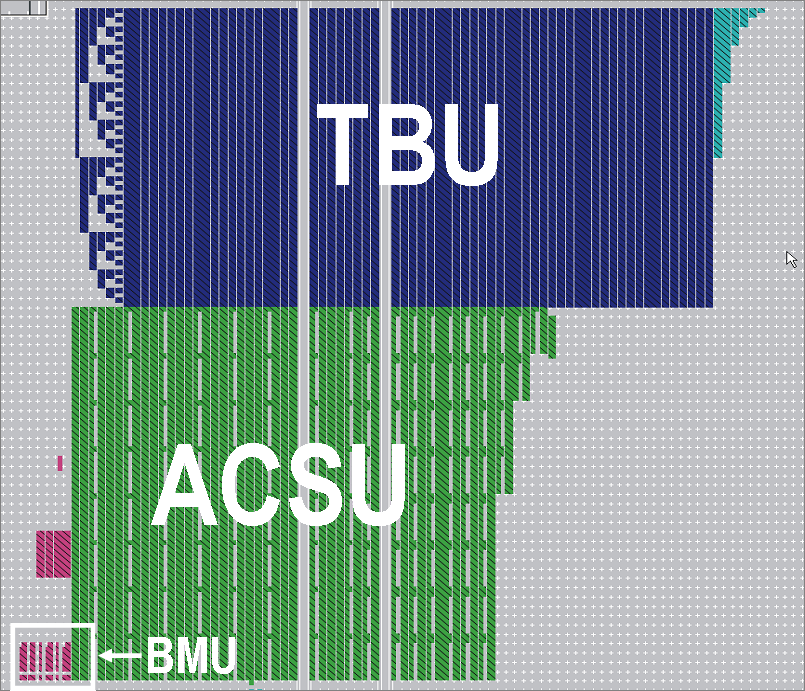The Viterbi core implements a convolutional Viterbi decoder suitable for IEEE 802.11 a/g and Hiperlan/2. It can be implemented using a Register Exchange (RE) structure or a Trace-Back (TB) structure, depends on the area and latency requirements. Its more important features and an a performance examples are shown below.
Viterbi core features:
- Fixed code rate of 1/2
- Constraint length K from 4 to 9
- Hard and quantized Soft decision Decoding
- Parameterizable options for soft data input from 2 to 10 bits
- Register Exchange and Trace-back method for survivor memory
- Variable traceback length up to 160
- Best state logic traceback
- Fully synchronous 1x or 2x versions
Implementation example
The Viterbi core was implemented in a Virtex-5 device (speed grade -3) with the following features:
- Code rate = 1/2
- Constraint length K = 7
- 6 bits Soft decision decoding
- Taceback length D = 63
- Register Exchange and Trace-Back method
- Fully synchronous 1x version
The following table shows the area, maximum data rate, latency and power consumption achieved by this core:
|
|
Register Exchange
|
Trace-Back
|
|---|---|---|
|
Area [slices]
|
4113 Slices
|
2178 Slices
|
|
Area [BSRAMs]
|
0 BSRAMs
|
2 BSRAMs
|
|
Max. Data Rate
|
310 Mbps
|
320 Mbps
|
|
Latency
|
72 Clock cycles
|
199 Clock cycles
|
The next figure shows the layout for the previous Viterbi implementation using Register Exchange method

